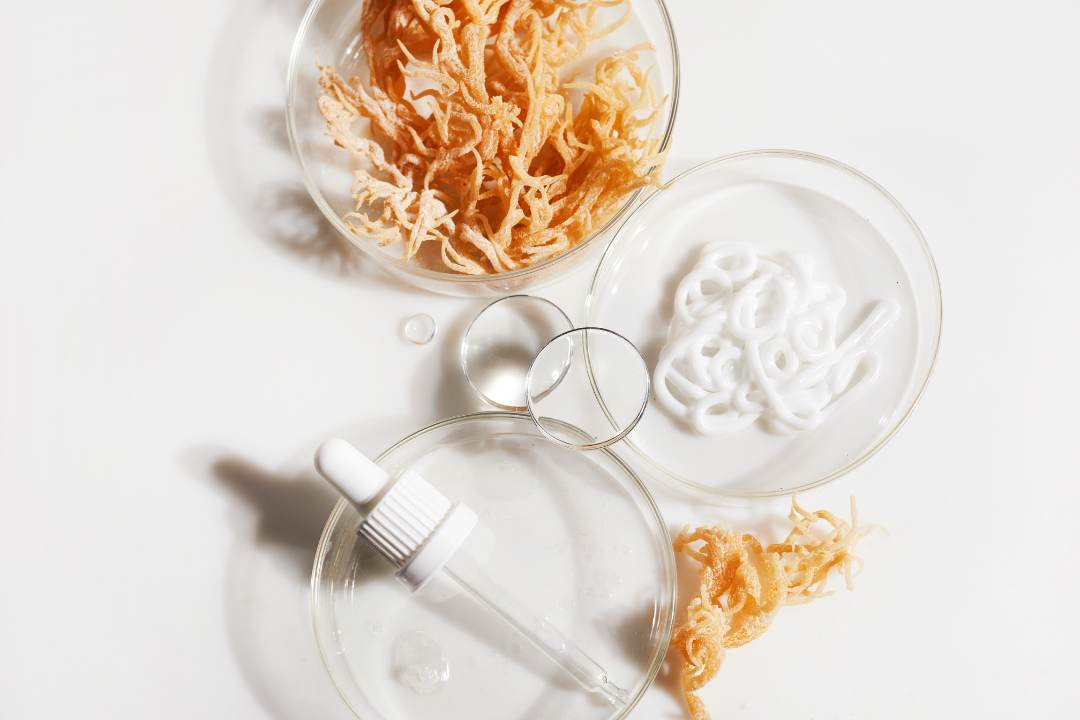
Introduction: The Oceanic Marvel
Irish sea moss, scientifically known as Chondrus crispus, is gaining recognition. This marine algae boasts an impressive array of health-promoting properties. Its rise to superfood status is backed by both tradition and science.
Historical Significance of Irish Sea Moss
Ancient Utilization and Cultural Importance
Irish sea moss has been a dietary staple for centuries. Coastal communities in Ireland and the Caribbean valued it highly. During the Irish Potato Famine, it became a crucial sustenance source.
From Traditional Medicine to Modern Superfood
Traditional healers long recognized sea moss’s potential health benefits. Modern scientific research is now validating many of these claims. This algae is transitioning from folk remedy to evidence-based superfood.
Nutritional Composition: A Microcosm of Essential Nutrients
Dispelling the 92 Minerals Myth
Claims about sea moss containing 92 of 102 essential minerals abound. While exaggerated, sea moss is undeniably nutrient-dense. Its diverse nutritional profile contributes to its superfood status.
Key Nutritional Components
Irish sea moss is rich in several vital nutrients:
- Iodine: Critical for thyroid function
- Iron: Essential for oxygen transport in blood
- Calcium: Fundamental for bone and dental health
- Magnesium: Crucial for neuromuscular function
- Potassium: Vital for cardiovascular health
- Zinc: Important for immune function and wound healing
Vitamin and Antioxidant Content
The vitamin profile of Irish sea moss is equally impressive:
Health Benefits: The Multifaceted Impact of Irish Sea Moss
Thyroid Function and Metabolic Regulation
Irish sea moss’s high iodine content supports optimal thyroid function. A well-functioning thyroid is crucial for maintaining metabolic homeostasis.
Immune System Enhancement
The nutrient density of sea moss contributes to robust immune function. Its antiviral and antimicrobial properties may bolster the body’s defense mechanisms.
Gastrointestinal Health
Prebiotic Properties
Irish sea moss contains prebiotic fibers that nourish beneficial gut microbiota. This can lead to improved overall gastrointestinal health.
Soothing Effects on the Digestive Tract
The mucilaginous nature of sea moss may alleviate gastrointestinal discomfort. It could potentially mitigate symptoms of conditions like acid reflux.
Dermatological Applications
Collagen Synthesis
Rich in sulfur-containing amino acids, sea moss supports endogenous collagen production. This contributes to skin elasticity and overall dermal health.
Hydration and Nourishment
Topical application of sea moss can enhance skin hydration. It may also reduce the appearance of fine lines and wrinkles.
Weight Management
Low in calories but high in nutrients, sea moss supports weight management. Its fiber content promotes satiety, potentially reducing overall caloric intake.
Cardiovascular Health
The potassium in sea moss supports healthy blood pressure levels. Its omega-3 fatty acids may help reduce inflammation and support heart health.
Incorporating Irish Sea Moss into Your Diet
Selecting Quality Sea Moss
Wild-Harvested vs. Aquaculture-Derived
Consider the source when selecting Irish sea moss. Wild-harvested varieties may have higher nutrient density. Aquaculture-derived options can be more sustainable.
Quality Indicators
Look for sea moss that is clean and free from debris. Natural colors range from golden to purple-red. Avoid unnaturally bright or bleached varieties.
Preparation Methods
Soaking and Cleaning Process
Soak dried sea moss in clean water for 6-12 hours. Rinse thoroughly to remove any residual sand or debris.
Creating Sea Moss Gel
- Blend soaked sea moss with fresh water until smooth.
- Refrigerate the mixture until it forms a gel consistency.
- Store in an airtight container for up to two weeks.
Culinary Applications
- Smoothies: Add a tablespoon of sea moss gel to smoothies.
- Soups and stews: Use as a natural thickening agent.
- Desserts: Incorporate into puddings or raw dessert recipes.
- Beverages: Blend into teas, lattes, or homemade plant-based milks.
- Skincare: Mix with honey or aloe vera for a nourishing mask.
Potential Side Effects and Precautions
While generally safe, consider these factors when using Irish sea moss:
- Iodine sensitivity: Consult a healthcare provider if you have thyroid disorders.
- Pregnancy and lactation: Limited research exists on safety during these periods.
- Medication interactions: May interact with blood-thinning medications.
- Contamination risk: Ensure your sea moss comes from reputable sources.
Future Prospects: Ongoing Research and Potential Applications
Current research is exploring Irish sea moss’s potential in various areas:
- Anti-carcinogenic properties
- Neuroprotective effects
- Diabetes management
- Applications in sustainable food technology
Sustainability and Environmental Considerations
The Importance of Responsible Harvesting
As demand grows, consider the environmental impact of harvesting practices. Support sustainable sources to preserve marine ecosystems.
Aquaculture: A Sustainable Alternative
Sea moss farming is emerging as a potential solution to meet demand. This method could provide a more controlled and sustainable supply.
Conclusion: Harnessing the Power of Irish Sea Moss
Irish sea moss offers a natural approach to supporting overall health. Its versatility in culinary and skincare applications makes it widely accessible. As research continues, we may uncover even more benefits of this remarkable algae.
Consider incorporating Irish sea moss into your wellness routine. Remember to source responsibly and consult healthcare professionals when necessary. Embrace the potential of this oceanic superfood and its myriad health benefits.